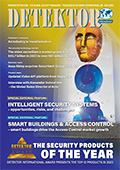Additionally, the need for reliable and high-quality public safety communication systems and standardization of infrastructure platforms is expected to offer tremendous growth opportunities in the near future.
The researchers say that public safety, as a major adopter, is set to dominate the critical communication market in terms of share during the forecast period. Public safety is one of the most important responsibilities of any government; it involves protecting individuals from crimes and natural disasters. An effective public safety mechanism involves disaster management and coordination between organisations such as law enforcement and border control, firefighters, emergency medical services. Effective communication is imperative for these organisations while dealing with any natural or man-made disaster. Various agencies provide emergency and rescue services and ensuring public safety. The purpose of these agencies is to deal with typical emergencies and ad hoc emergencies as a part of their typical responsibilities. Spreading community awareness, running prevention programmes to detect, mitigate, and report emergencies effectively are the major functions of these emergency solution providers. These service providers use critical communications systems during any emergency, such as natural and man-made disasters.
LTE is the next global standard for critical communications, according to several industry representatives, consultants, and end-users. Factors such as the adoption of LTE by Firstnet by public safety organisations in the US, the inclination of the UK Home Office toward LTE, and plans of South Korea to build a nationwide LTE network for public safety are driving the development of LTE for critical communications. The requirements of public safety communications are rapidly changing, involving the adoption of broadband-based multimedia applications, remote surveillance, and robotic technologies such as unmanned aerial vehicles (UAVs). As a result, public safety agencies are replacing their narrowband public safety networks with LTE-based networks.
Services play a crucial role in the growth of the critical communication market. Integration services comprise network-related services that include planning, design, installation, and implementation of networks. Increasing instances of threats and cyber attacks and the emergence of sophisticated attacks are forcing several organisations and government organisations to upgrade their communications systems consistently. In addition, new networks also pose significant challenges for governments regarding management and operations.
The global market for maintenance services is highly fragmented and comprises players from diverse backgrounds, ranging from specialised managed security services (MSS) providers to telecommunication companies, system integrators, and value-added resellers. Providers of consulting services are responsible for identifying and mitigating risks effectively and efficiently. As a result, the service offerings expected to grow with higher CAGR during the forecast period.
APAC is witnessing a surge in the smart city projects, which is creating a demand for critical communication technologies, such as surveillance technology, scanning, and critical communication networks. To combat the ever-growing incidents of terrorism and natural disasters, countries in APAC are increasing their spending on the adoption of security solutions. In recent years, APAC has witnessed tremendous economic growth, political transformation, and social change. Organisations in APAC are expected to invest heavily in deploying critical communication systems to deal with terrorist breaches and natural disasters, as well as in verticals such as transportation, public safety, mining, and utilities to ensure safety and security. Moreover, Various ongoing projects, such as metro and railway communication projects, in India, China, and South Korea, are contributing to the growth of the market in APAC.
Key players in the market mentioned within the report include Motorola, Ericsson, Nokia, Huawei, AT&T, Hariss, ZTE , Cobham Wireless, Inmarsat, Hytera, JVCKenwood, Mentura, Tait, Telestra, Ascom, Zenitel, Leonardo, Secure Land Communications, and Simoco Wireless.














